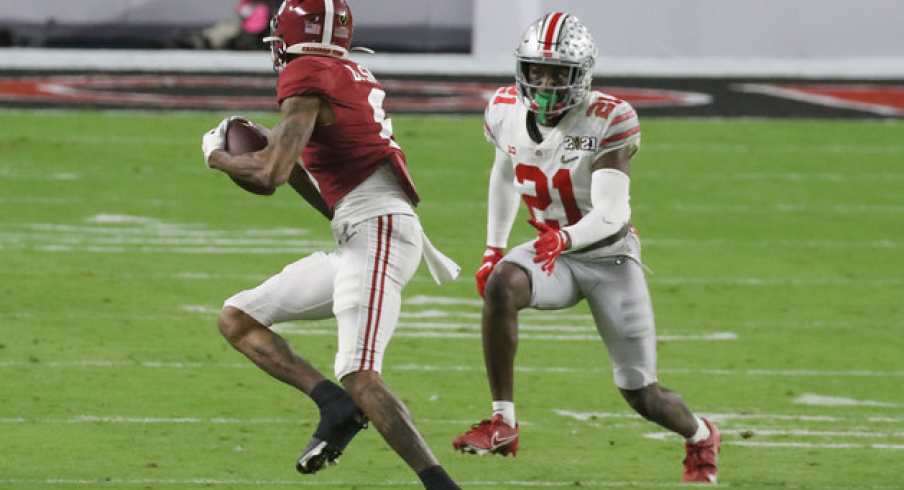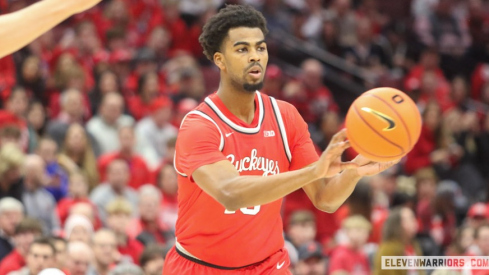"Christ, you don't need a quadrophonic Blaupunkt! What you need is a curveball! In the show, everybody can hit a fastball!" - Crash Davis in 'Bull Durham'
In 1974, Nolan Ryan made history. As Major League Baseball began using radar guns to visualize pitch velocity, Ryan's fastball was the first to be measured in a big-league park.
In the ninth inning of a 0-0 tie, the big Texan hurled a fastball across home plate that registered 100.9 mph on the radar gun, famously earning him the moniker, The Ryan Express. He'd toss seven no-hitters and strike out a record 5,714 batters in his 27 major league seasons, thanks in large part to that devastating fastball.
According to his book, Nolan Ryan’s Pitcher’s Bible, every single pitch he threw for the Houston Astros from 1980-89 was logged, and not a single one of the 17,309 fastballs he threw in that span was clocked below 90 mph. But it's important to remember that the flame-thrower pitched 10,609 pitches during that stretch which were not four-seamers. Ryan kept a 12-6 curveball and an offspeed circle-changeup in his repertoire to keep hitters from always expecting the heater.
If the analogy has yet to hit home, the reason we're talking about pitchers is thanks to the way Alabama offensive coordinator Steve Sarkisian (and a small army of overqualified 'analysts'), teed off on the Ohio State defense last week in Miami. Not only did the Crimson Tide seem to know what to expect from the Buckeyes on virtually every snap, but they had a plan to exploit their pass coverage, as quarterback Mac Jones completed 36 of 45 attempts for 464 yards and five touchdowns.
While some of the plays made by Heisman-winning wide receiver DeVonta Smith were the product of his elite speed and excellent hands, many of his 12 catches were made with no defender even within a few yards, allowing him to pick up 106 of his 215 receiving yards after making the catch.
It is worth noting, however, that the Buckeyes' defensive game plan was not an entire failure. Despite scoring twice on the ground, Najee Harris totaled just 79 yards rushing with an average of 3.6 ypc, marking one of his worst performances of the season.
Expecting Harris to try and attack outside the tackles with outside zone and buck sweep runs, the Silver Bullets did an excellent job of containing the Doak Walker Award winner. Harris was rarely able to turn the corner as outside linebackers Baron Browning and Justin Hilliard did an excellent job of setting an edge and forcing him back into the arms of Tuf Borland and Pete Werner, who combined for 22 tackles in Hard Rock Stadium.
But partly because of Ohio State's relentless focus on containing Harris in the run game, the rest of the field was wide open for Smith and Jones to toy with the opposing secondary. Knowing the Buckeyes would play with just one safety in the middle of the field while the other dropped down in the box to fill a run gap, it meant that corners Shaun Wade and Sevyn Banks were effectively left alone on an island against the nation's best player - regardless of whether defensive coordinator Kerry Coombs called for man or zone coverage.
Such a decision left the OSU corners in a lose-lose predicament.
If they played with a loose cushion, Jones would pull the ball from Harris on one of the countless Run-Pass-Options (RPOs) called that evening by Sarkisian, looking for Smith on a quick slant underneath. If those corners pressed, Smith would turn his route into a vertical one down the sideline, shaking the defender at the line and leaving them in his wake.
For those watching Ohio State for the first time all year, it may have looked as though the Buckeyes finally faced an opponent with the perfect gameplan to defeat the defensive structure they've ridden to the College Football Playoff two years in a row. For Ohio State fans, however, Alabama's play-calling felt all too familiar.
Whether it was Penn State's 281-yard passing performance that came from similar RPOs...
...or Indiana's plan to isolate Wade and Banks one-on-one with their receivers, which shredded OSU for 491 passing yards...
...or even the way Trevor Lawrence and the Clemson receivers racked up 400 passing yards in a losing effort...
Clemson is still fighting pic.twitter.com/RtyswseK0o
— ESPN (@espn) January 2, 2021
...Alabama didn't need to change anything as it prepared to take on Kerry Coombs' defense.
As Sarkisian detailed in a clinic speech just over one year ago, the Tide's passing game is designed to be complementary. They'll try to establish the run game until defenses commit extra defenders, at which time they incorporate those RPO elements.
Once the defense presses up to take away those RPOs, Sarkisian will call deep, play-action concepts that also look like the initial run plays, sucking defenders out of position. According to Harris, that's exactly what happened in this game.
Hell of a quote from Najee Harris pic.twitter.com/xTMilmKxyR
— Jason Priestas (@priestas) January 12, 2021
Never was that plan more successful than on Alabama's third drive of the game, when the Ohio State defense rushed up to take away another Harris handoff, only to see their 3-deep, 4-under zone decimated by just two deep routes.
But even without the threat of a handoff, Sarkisian knew exactly how to pick apart the defense he knew was coming. Expecting the same, Cover 3 zone on an early 1st & 10, Alabama simply flooded one side with three receivers in the space of two defenders, giving Jones an easy read.
With the outside receiver pulling up the buzz defender, Josh Proctor, with a simple snag route underneath, the vertical route and deep out from the inside receivers put Wade in no man's land as the deep 1/3 defender.
The Buckeyes have been roundly criticized for sticking with a 4-4 defense for large parts of the game, despite the fact that it has been largely successful against two-tight end sets for the last couple of years. But the fact that Alabama regularly trotted out a 'jumbo' package with 300 lb tackle Kendall Randolph in a #85 jersey to play tight end was often overlooked. Had Coombs not responded by adding an extra linebacker, the Tide would have easily run over the opposition.
But that decision also meant that Ohio State had to isolate a defensive back on Smith, which we saw near the end of Alabama's second drive as Jones, Harris, Smith, and co. approached the goal line.
The Bama offense sent Smith on an orbit motion behind Jones - appearing to set up an end-around - mirroring the exact same formation and personnel as they'd shown against Notre Dame a week prior. Except this time, as Banks tried desperately to weave through traffic and mirror Smith in man-coverage, Smith simply planted and changed direction, turning the play into an easy swing pass and six points.
Banks never even saw the ball come out of Jones' hand.
And yet, when the Tide got the ball back a few plays later, Sarkisian called the same play on first down, albeit from a different formation. Once again, Banks was caught out of position and could only recover once Smith had picked up ten easy yards.
Sarkisian's play-calling also delivered the defining moment of a contest that would never be in doubt after halftime. Late in the second quarter and facing 2nd & 6, Sarkisian called for the play that effectively put the Country Cover 3 scheme, so popular in the 1980s and 90s, on the shelf for many defensive coordinators.
With Smith lined up as the #3 receiver inside in a 3x1 set, Sarkisian called for a version of Four Verticals, which attacks the free safety by making him choose which deep route to cover in the middle of the field. Thanks to a switch release from the two outside receivers, the concept was briefly masked, drawing the attention of Marcus Williamson, who was responsible for that deep middle zone.
As the lone defender in that part of the field, Williamson was right to initially open up toward the three-receiver side, just as Borland was right to wall off Smith from running a crossing route through his zone. In this zone-based system, the middle linebacker is expecting Williamson to provide leverage over the top up as the receiver runs vertically, exiting Borland's zone.
But Williamson failed to get enough depth, nor did he seem to ever get eyes on the Heisman-winner as he ran right down the middle of the field. This left Borland with no help as Jones lobbed an easy pass to Smith, and making the two-time captain a national punchline in the process.
It must not be forgotten why Smith is just the fourth receiver to win the award given annually to the nation's best player. From the OSU perspective, however, there were seemingly no answers to be found.
Nickelback Lathan Ransom played just nine snaps in the game, allowing a hobbled Jaylen Waddle run unabated over the middle for a big, 15-yard gain on an early 3rd & 3. But like nearly every other member of the Buckeye secondary, Ransom's skill set as a big, rangy safety seemed an odd fit to be playing press-man coverage on a slot receiver known for his straight-line speed.
Throughout this entire season, Ohio State's coverage strategy appeared to be a square peg forcing itself into a round hole. As Ryan Day admitted upon the departure of former coordinator Jeff Hafley for the head coaching job at Boston College following the 2019 season, this approach was by his design.
The idea of this defense was something I had a vision of, four down front with cover 1, cover 3, a lot of single-high. That's what Jeff fit perfectly, Matt Barnes had done at Maryland, Al had done in his past. It all fit.
We're not all of a sudden going to change. Jeff came in to run this defense, and he did a great job. But we're going to fill that in and we're going to continue to do the same thing we're doing on defense in the future.
It should be noted that Coombs was given the somewhat unenviable task of making this approach work with a very limited hand.
First, two contributors from the year prior, Jahsen Wint and Amir Riep, were deservedly kicked off the team for their actions off the field in February, sapping Coombs' secondary of needed depth after he was already forced to replace three starters who'd left for the NFL. Then, in just the second game of the season, promising corner Cameron Brown tore his Achilles and was lost for the year, stressing depth even further.
Add in the fact that Coombs had just three spring practice sessions and a very odd fall camp, and it's no wonder that he and the rest of the coaching staff simply elected to run it back with the same approach as the year prior. But regardless of why the Ohio State defense seemed so static and unpredictable on the sport's biggest stage, the reality is that simply relying on this single-high approach alone will only lead to diminishing results in the future.
Day said after last season that he had the most trouble as a play-caller when facing this kind of system, and making the single-high approach his defense's fastball is by no means a bad idea, especially when the personnel allows it. But the mere threat of a second look is absolutely necessary, just to keep opposing play-callers like Sarkisian from dictating the course of a game.
On May 1, 1991, and at the age of 44, Nolan Ryan threw the seventh and final no-hitter of his storied career. His fastball was still hitting 90+ mph, but he didn't fan 16 batters that night with his heater alone.
Striking out the side in the 2nd inning: 3 curveballs, 3 frozen Blue Jays pic.twitter.com/MQGVkLgjgP
— David Adler (@_dadler) March 24, 2020
Now, approaching what we all hope is a more "normal" offseason and practice schedule, it's incumbent upon Coombs to develop a second pitch.



